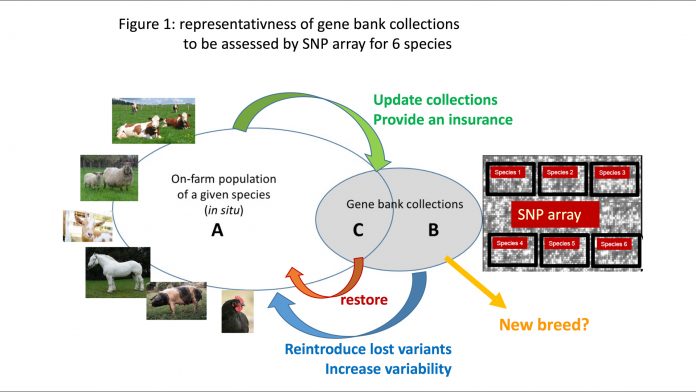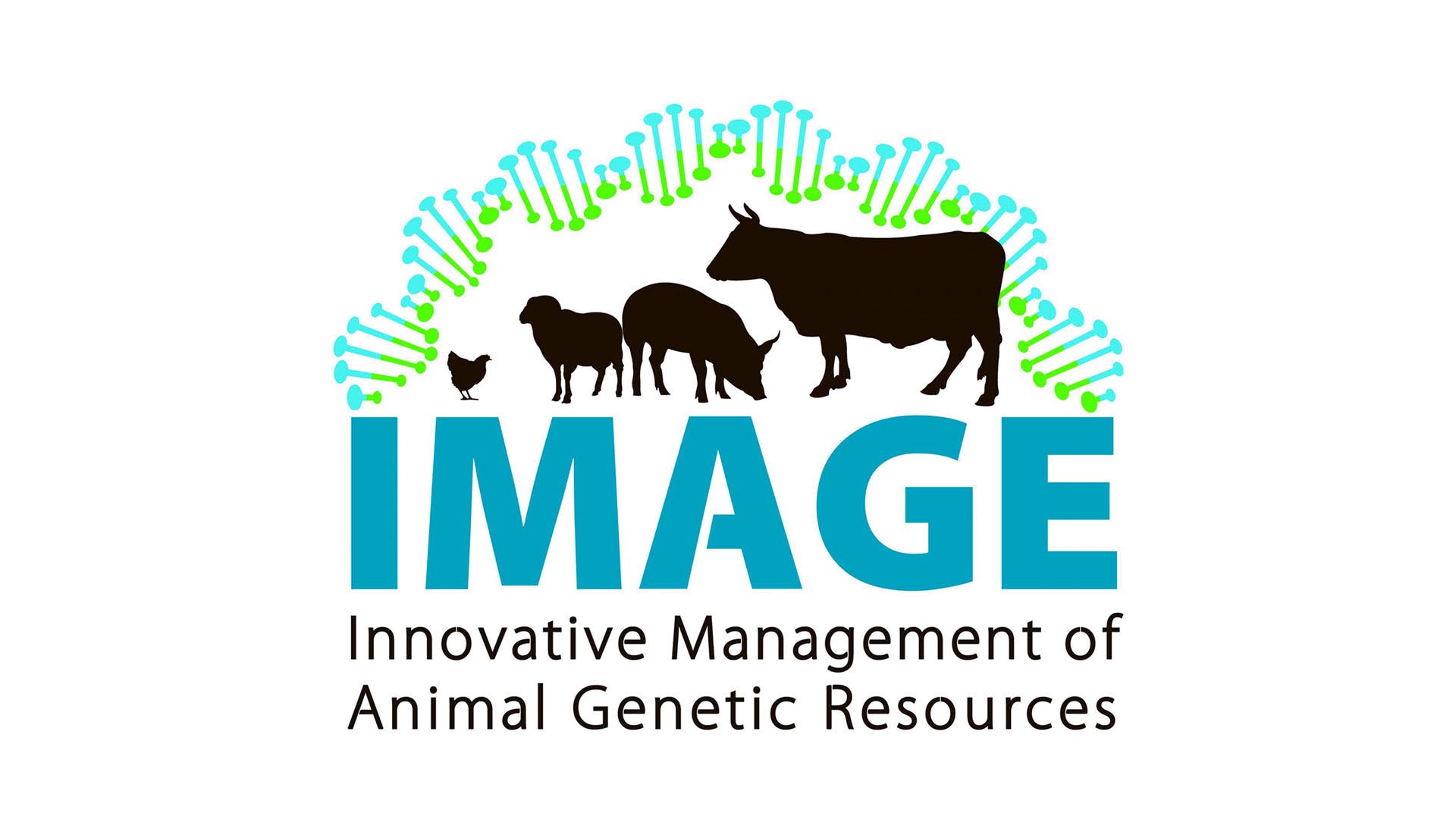Gene banks keep a range of biological material: gametes, embryos, DNA, somatic tissues, biological fluids. They represent a major investment for research institutions as well as for governments for the preservation of genetic diversity.
The challenge is to evaluate the representativeness of gene bank collections relative to the diversity at the species level:
• Which part of the on-farm variability is missing in the gene banks (Figure 1, area A);
• Which part is unique to gene banks (Figure 1, area B); and
• Which part is shared between gene banks and on-farm populations (Figure 1, area C).
If area B is empty, the strategic interest of the gene bank is limited to long term conservation, because all the variability is still available on-farm. If area B is not empty, then the challenge is to determine whether original variants may be extracted from the gene banks to reintroduce lost traits or reorient the breeding scheme. This will be particularly relevant when the gene bank collections are genetically distant from the on-farm gene pool; and when new production conditions call for a shift in desired genotypes. Using high density SNP chips – an array of thousands of single nucleotide polymorphisms – now makes it possible to compare genetic diversity and genetic relatedness in a standard way.
The IMAGE H2020 research project is developing a SNP chip which can be used for several species in order to facilitate comparison between gene bank collections, within or between countries; and to facilitate decision-making for new entries into a collection as well as for distribution of collections to farms. The technology is now available to build such a multi-species tool; and it has been decided to provide information on 10,000 markers per species covering the whole genome.
Which species?
A first set of six species has been selected according to their occurrence in European gene banks: cattle, sheep, goat, horse, pig and chicken. Two further sets are in preparation taking additional species into account. An inventory of potential usage of such a multi-species SNP array performed by researchers at the United Nations’ Food and Agriculture Organisation (FAO) demonstrated an interest of gene banks to use such an array for 100,000 samples worldwide. The economic feasibility report indicated that the cost of genotyping should not exceed $20 (€17.83) per DNA sample, including the costs of the array and genotyping service. A discussion with governmental delegations on animal genetic resources was held on 19 February 2019 at the FAO’s headquarters in Rome, with representatives from around the world exhibiting interest in the proposed design.
Which DNA markers?
Researchers decided to select:
• Approx 8,000 markers per species to exemplify global diversity;
• Up to 1,000 markers representing functional information, the sex chromosomes, mtDNA; and
• Up to 1,000 markers representing ancestral variation, defined through analysis of a species’ wild ancestor or ancient DNA samples where these are available.
IMAGE and its research partners are collecting data to optimise the selection of species for SNPs.
Which technology?
Of the two available providers of genotyping technology, the IMAGE consortium selected the Affymetrix technology to initiate the production of three arrays, each holding six species. The choice of species for the next two arrays will be made according to the quality of the reference genome sequence and the availability of reference DNA samples to be used in testing the array. Species such as water buffalo, rabbits, camels, ducks, quail and bees are being considered.
The IMAGE multi-species array will be public and available worldwide, not only to gene banks but also to farmers and breeding companies at the same cost. The more users the array has, the easier it will be to maintain a low price.
IMAGE will perform a validation test on the first array on DNA samples from 1,920 animals which will be provided by the IMAGE consortium’s gene banks. This testing set will cover a wide range of breeds to ensure proper validation.
Methods to browse diversity and standard tools to analyse the genotyping data of the IMAGE arrays will be made available to gene banks and farmers.
For more information please visit imageh2020.eu.








